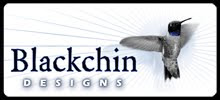
Nothing is more inspiring than the hundredth American Robin of spring!
Spring migration is definitely over, but the spring breeding frenzy continues. At Huntington Central Park and San Joaquin Marsh this weekend, just about all the songbirds we saw were dashing about with beaks full of down and twigs, and pairs of dualing and/or mating Black Phoebes and Downey Woodpeckers were chasing each other noisily through the treetops. Glenn's cameras are in the shop (all the pictures here are mine), all the exotic migrants are gone (no one had seen the Huntington Central Park Yellow-throated Vireo in several days), so we resigned ourselves to kicking back and watching the locals make out.
At Huntington Central, we found Yellow Warblers, Bullock's Orioles, Western Tanagers, and Black-headed Grosbeaks (among other birds) near the island, as well as a very loud nesting House Wren. There were also a large number of singing American Robins.
And the Robins made me think of the weird East Coast bias that seems to permeate U.S. cultural education. It still seems odd to my SoCal-based birding brain that these (and Northern Cardinals) are considered the canonical backyard birds that everyone knows: I only got my first Cardinal last week, and it was most likely an escapee. Robins are not exactly rarities here, but they're not all that common either. I don't remember ever seeing one when growing up in the Hollywood Hills, where we had a ton of birds. I do remember seeing dark brown birds with reddish underparts—which I realize now were California Towhees—and thinking to myself that these HAD to be Robins, since according to every science text and children's novel I had ever read, every red-blooded American had Robins in their back yard! And Northern Cardinals. I figured that for some reason, our Robins were a bit plain, and thought it was grossly unfair that we didn't have any Cardinals. And that we didn't get to go out in the winter and tap maple trees, like the kids in all my school readers. Or get snow days.
It would be a great day for cross-cultural education when East Coast school kids have to slog their way through stories about Dick and Jane assembling earthquake kits, or learning the fundamentals of surf etiquette or draught-resistant gardening.
End of digression.
At San Joaquin Marsh, we lingered at the front of the reserve. The singing Yellow Warbler was still in his favorite spot right across from Pond E. In Pond E, we saw three fluffy baby American Avocets—potentially the children of the courting pair we had been following for about a month:

Uncharacteristically, there were almost no ducks in Pond E. We soon found out why: as soon as any Mallards tried to land, the Avocets, who normal co-exist quite peaceably with them, would chase them off. Apparently, the babies need all that extra space and protection.
Further along, on the edge of Pond C, we found a pair of Killdeer with three fuzzy babies:

They were interesting to watch—Killdeer parents keep a close eye on their young, and the young stay close to them. The little one in the picture above eventually snuggled up to his mother (or father) and tucked him/herself under the parent's wing.
And from all the nesting activity going on this weekend, it looks like more little ones of any number of species are on the way.







3 comments:
It's not that we East-coast'ers don't love your California birds . . my three favorite nature blogs are from Utah, Oregon, and Cali (yours). I think you can probably blame Mr. Audubon's literary influence for those predominantly Eastern birds being so well entrenched in children's books. I think you've found your niche either way though . . there's probably a big market for kids books from a West Coast perspective. Represent!
Thanks much! Actually, the L.A. Times does publish stories for children on their weekly children's page about our local flora, fauna, and customs (such as jacaranda flowers, eating tamales at Christmas, and shooting people on freeways--just kidding about the last one!) Our birds may not be as flashy as all those Eastern warblers, but they are still pretty darn cool!
Hope all is well in beautiful North Carolina!
Awwwww..... baby avocets! baby killdeer! Sooo cute! I'd never seen them before.
POST MORE BABY PHOTOS!
Post a Comment